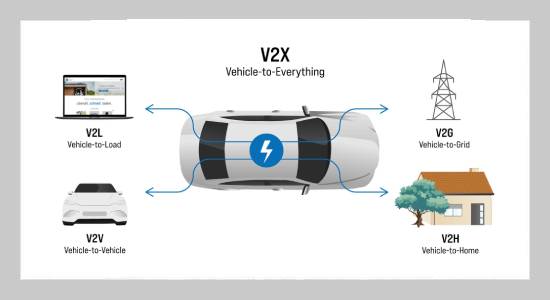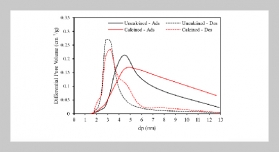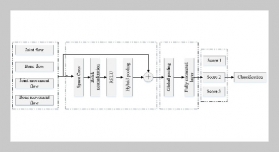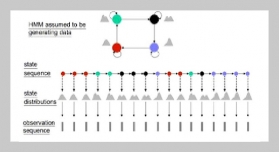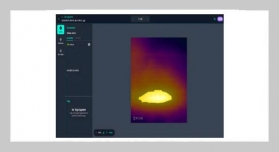- [1] A. Bhosale and S. Mastud, (2023) “Comparative environmental impact assessment of battery electric vehicles and conventional vehicles: A case study of India" Int. J. Eng. 36: 965–978. DOI: 10.5829/IJE.2023.36.05B.13.
- [2] M. Z. Hauschild. “Life cycle assessment: goal and scope definition”. In: CIRP Encyclopedia of Production Engineering. Springer, 2018, 1–6. DOI: 10.1007/978-3-319-56475-3.
- [3] N. S. Pearre and H. Ribberink, (2019) “Review of re search on V2X technologies, strategies, and operations" Renewable and Sustainable Energy Reviews 105: 61–70. DOI: 10.1016/j.rser.2019.01.047.
- [4] M. R. H. Mojumder, F. Ahmed Antara, M. Hasanuz zaman, B. Alamri, and M. Alsharef, (2022) “Electric vehicle-to-grid (V2G) technologies: Impact on the power grid and battery" Sustainability 14(21): 13856. DOI: 10.3390/su142113856.
- [5] B. Bibak and H. Tekiner-Mo˘gulkoç, (2021) “A com prehensive analysis of Vehicle to Grid (V2G) systems and scholarly literature on the application of such systems" Renewable Energy Focus 36: 1–20. DOI: 10.1016/j.ref.2020.10.001.
- [6] C. Liu, K. Chau, D. Wu, and S. Gao, (2013) “Opportunities and challenges of vehicle-to-home, vehicle-to-vehicle, and vehicle-to-grid technologies" Proceedings of the IEEE 101(11): 2409–2427. DOI: 10.1109/JPROC.2013.2271951.
- [7] N. Xu and C. Chung, (2015) “Reliability evaluation of distribution systems including vehicle-to-home and vehicle-to-grid" IEEE transactions on power systems 31(1): 759–768. DOI: 10.1109/TPWRS.2015.2396524.
- [8] S. R. Bondalapati, B. N. Bhukya, G. P. Anjaneyulu, M. Ravindra, and B. S. Chandra, (2023) “Bidirectional Power Flow between Solar Integrated Grid to Vehicle Vehicle to Grid and Vehicle to Home" Journal of Applied Science and Engineering 27(5): 2571–2581. DOI: 10. 6180/jase.202405_27(5).0014.
- [9] M. Ahmadigorji and M. Mehrasa, (2023) “A Robust Renewable Energy Source-oriented Strategy for Smart Charging of Plug-in Electric Vehicles Considering Di verse Uncertainty Resources" International Journal of Engineering, Transactions A: Basics 36(4): 709–719. DOI: 10.5829/IJE.2023.36.04A.10.
- [10] M. Gholami and M. Sanjari, (2023) “Optimal operation of multi-microgrid system considering uncertainty of electric vehicles" International Journal of Engineering, Transactions B: Applications 36(8): 1398–1408. DOI: 10.5829/IJE.2023.36.08B.01.
- [11] S. Tian, G. Razeghi, and S. Samuelsen, (2024) “Assessment of vehicle-to-load in support of home appliances" Journal of Energy Storage 104: 114406. DOI: 10.1016/j.est.2024.114406.
- [12] Information on 2023 Ford F-150 Lightning. 2023. URL: https: //www.meeganford.com/2023-ford-f-150-lightning.htm.
- [13] Information on EVDatabase. URL: https: //ev-database.org.
- [14] S. Kumar, B. Ramalingam, and K. Yadav. “A Novel Circuit Topology for Vehicle to Load (V2L) Application”. In: 2023 9th International Conference on Electrical Energy Systems (ICEES). IEEE. 2023, 300–305. DOI: 10.1109/ICEES57979.2023.10110048.
- [15] Y. Liu, X. Wang, W. Qian, A. Janabi, B. Wang, X. Lu, K. Zou, C. Chen, and F. Z. Peng. “DC voltage control of inverter interfaced dual active bridge converter for V2L applications”. In: 2019 IEEE 7th workshop on wide bandgap power devices and applications (WiPDA). IEEE. 2019, 319–324. DOI: 10.1109/WiPDA46397.2019.8998961.
- [16] S. Dutta, A. K. Rathore, and V. Khadkikar, (2023) “Single-phase bridgeless converter for on-board EV charger with flexible charging capabilities" IEEE Journal of Emerging and Selected Topics in Industrial Electronics 4(4): 1170–1180. DOI: 10.1109/JESTIE.2023.3270107.
- [17] A. Bandani and F. Barati, (2022) “Stable Operation Limits in Dual Active Bridge for Super Capacitor Applications" Int. J. Eng. Trans. B Appl 35(5): 875–882. DOI: 10.5829/IJE.2022.35.05B.04.
- [18] M. Deepak, G. Janaki, and C. Bharatiraja. “Single phase shift dual active bridge high frequency DC-DC converter for electric vehicle battery charger 6.6 kW”. In: 2023 Fifth International Conference on Electrical, Computer and Communication Technologies (ICECCT). IEEE. 2023, 1–6. DOI: 10.1109/ICECCT56650.2023.10179621.
- [19] C. Calderon, A. Barrado, A. Rodriguez, A. Lazaro, C. Fernandez, and P. Zumel. “Dual active bridge with triple phase shift by obtaining soft switching in all operating range”. In: 2017 IEEE Energy Conversion Congress and Exposition (ECCE). IEEE. 2017, 1739 1744. DOI: 10.1109/ECCE.2017.8096004.
- [20] H. Al Attar, M. Hamida, M. Ghanes, and M. Taleb. “Model Free Control design of DC-DC LLC converter with phase shift modulation in V2X mode for EV charger application”. In: 2022 IEEE Conference on Con trol Technology and Applications (CCTA). IEEE. 2022, 734–739. DOI: 10.1109/CCTA49430.2022.9966005.
- [21] X. Sun, Y. Shen, Y. Zhu, and X. Guo, (2014) “Interleaved boost-integrated LLC resonant converter with fixed-frequency PWM control for renewable energy generation applications" IEEE Transactions on Power Electronics 30(8): 4312–4326. DOI: 10.1109/TPEL.2014. 2358453.
- [22] B. Yang, F. C. Lee, A. J. Zhang, and G. Huang. “LLC resonant converter for front end DC/DC conversion”. In: APEC. Seventeenth Annual IEEE Applied Power Electronics Conference and Exposition (Cat. No. 02CH37335). 2. IEEE. 2002, 1108–1112. DOI: 10.1109/APEC.2002.989382.
- [23] H .AlAttar, M. A. Hamida, M. Ghanes, and M. Taleb, (2023) “Review on modeling and control strategies of DC–DCLLC converters for bidirectional electric vehicle charger applications" Energies 16(9): 3946. DOI: 10.3390/en16093946.
- [24] M. Rad and A. Taheri, (2015) “Digital controller design based on time domain for dc-dc buck converter" International Journal of Engineering-Transactions B: Applications 28(5): 693–700. DOI: 10.5829/idosi.ije.2015.28.05b.07.
- [25] V. K. Kannan, N. Rengarajan, et al., (2013) “Control of Photovoltaic System with A DC-DC Boost Converter Fed DSTATCOM Using Icos Φ Algorithm" Journal of Applied Science and Engineering 16(1): 89–98. DOI: 10.6180/jase.2013.16.1.12.
- [26] N. Zanatta, T. Caldognetto, D. Biadene, G. Spiazzi, and P. Mattavelli, (2023) “A two-stage DC-DC isolated converter for battery-charging applications" IEEE Open Journal of Power Electronics 4: 343–356. DOI: 10. 1109/OJPEL.2023.3271227.
- [27] P. Wen, C. Hu, H. Yang, L. Zhang, C. Deng, Y. Li, and D. Xu. “Atwostage DC/dcconverter with wide input range for EV”. In: 2014 International Power Electronics Conference (IPEC-Hiroshima 2014-ECCE ASIA). IEEE. 2014, 782–789. DOI: 10.1109/IPEC.2014.6869676.
- [28] H. Chih-Chiang and J.-B. Lai, (2024) “A Bidirectional Isolated DC-to-DC Converter with Hybrid Control of Pulse Width Modulation and Pulse Frequency Modulation" Processes 12(12): 2866. DOI: 10.3390/ pr12122866.
- [29] H.P. Vu, T. A. Do, M. L. Nguyen, and Q. D. Nguyen, (2021) “Design and Implementation of 2.5 kW IBFB-LLC DC/DC Converter Using SiCMosfet" JST: Engineering And Technology For Sustainable Development 31(2): 7–14. DOI: 10.51316/jst.149.etsd.2021.31.2.2.
- [30] X. Wang, Y. Liu, W. Qian, B. Wang, X. Lu, K. Zou, N. González-Santini, U. Karki, F. Z. Peng, and C. Chen. “A 25kW SiC universal power converter building block for G2V, V2G, and V2L applications”. In: 2018 IEEE international power electronics and application con ference and exposition (PEAC). IEEE. 2018, 1–6. DOI: 10.1109/PEAC.2018.8590435.
- [31] X. Wang, Y. Liu, W. Qian, A. Janabi, B. Wang, X. Lu, K. Zou, C. Chen, andF. Z.Peng. “Design, and control of a SiC isolated bidirectional power converter for V2L applications to both DC and AC load”. In: 2019 IEEE 7th workshop on wide bandgap power devices and applications (WiPDA). IEEE. 2019, 143–150. DOI: 10. 1109/WiPDA46397.2019.8998951.
- [32] J. A. Rahavi, T. Kanagapriya, and R. Seyezhai. “De sign and analysis of interleaved boost converter for renewable energy source”. In: 2012 International Con ference on Computing, Electronics and Electrical Tech nologies (ICCEET). IEEE. 2012, 447–451. DOI: 10.1109/ICCEET.2012.6203850.
